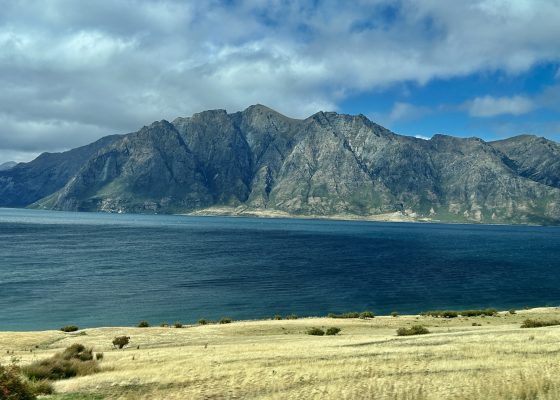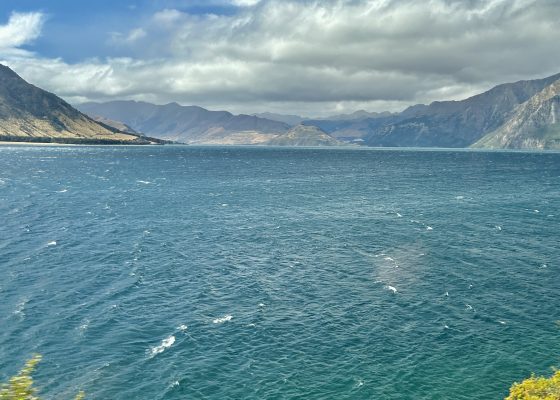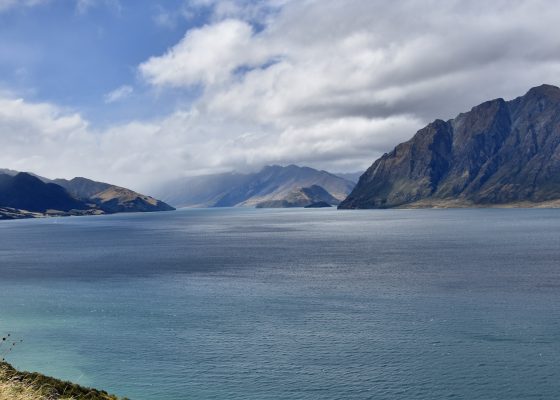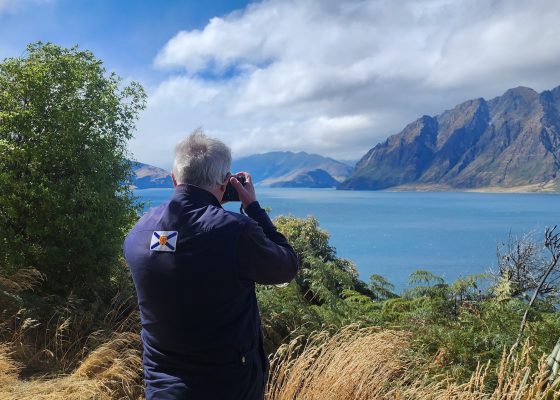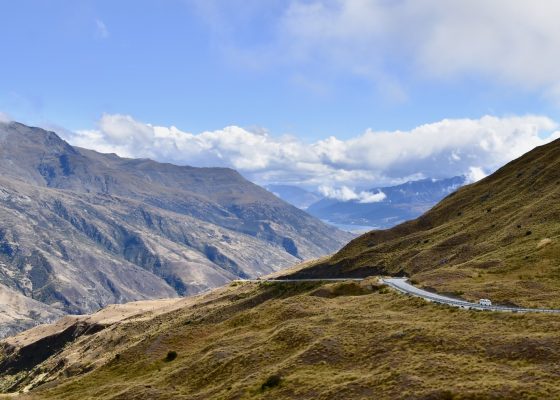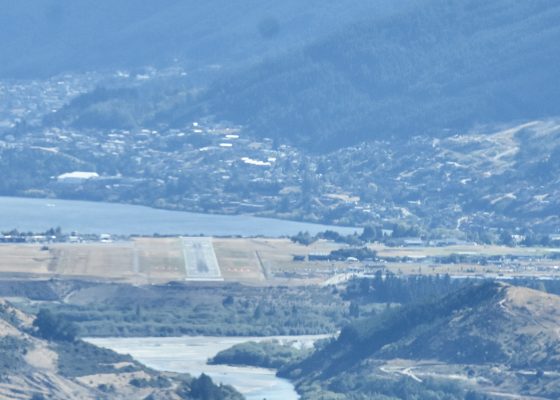Te Wahipounamu – South West New Zealand
Te Wahipounamu – South West New Zealand are the Maori and English names for one of the largest and most spectacular UNESCO World Heritage Sites on the planet (for brevity’s sake I’ll just refer to it as Te Wahipounamu hereafter). Covering a full ten percent of the land mass of the country, it contains four national parks and preserves flora and fauna that are the unique as well as landscapes that have been described as among the most beautiful and awe inspiring on Earth . Our Adventures Abroad group led by two wild and crazy guys, tour leader Chris Tripodi and local guide and driver Ian Hodgkinson, entered this natural wonderland in the last post when we ended the day at the small town of Franz Josef. Today we will explore it by driving along the coast of the Tasman Sea before boarding a jet boat that will take us up the Haast River where we will rejoin Ian for an amazing descent into Queenstown. This is just one of three adventures we’ll be having in Te Wahipounamu as we hit high gear on this tour. Please come along for all the action.
Te Wahipounamu was inscribed as a UNESCO World Heritage Site with this brief description of its landscape.
The landscape in this park, situated in south-west New Zealand, has been shaped by successive glaciations into fjords, rocky coasts, towering cliffs, lakes and waterfalls. Two-thirds of the park is covered with southern beech and podocarps, some of which are over 800 years old. The kea, the only alpine parrot in the world, lives in the park, as does the rare and endangered takahe, a large flightless bird.
In the last post we were fortunate enough to spot a kea, but the likelihood of seeing a takahe is far less probable. They were thought to be extinct for over 50 years until a few were rediscovered in 1948 in a remote area of South Island that is now part of Te Wahipounamu. This is what one looks like so we’ll keep our eyes peeled.
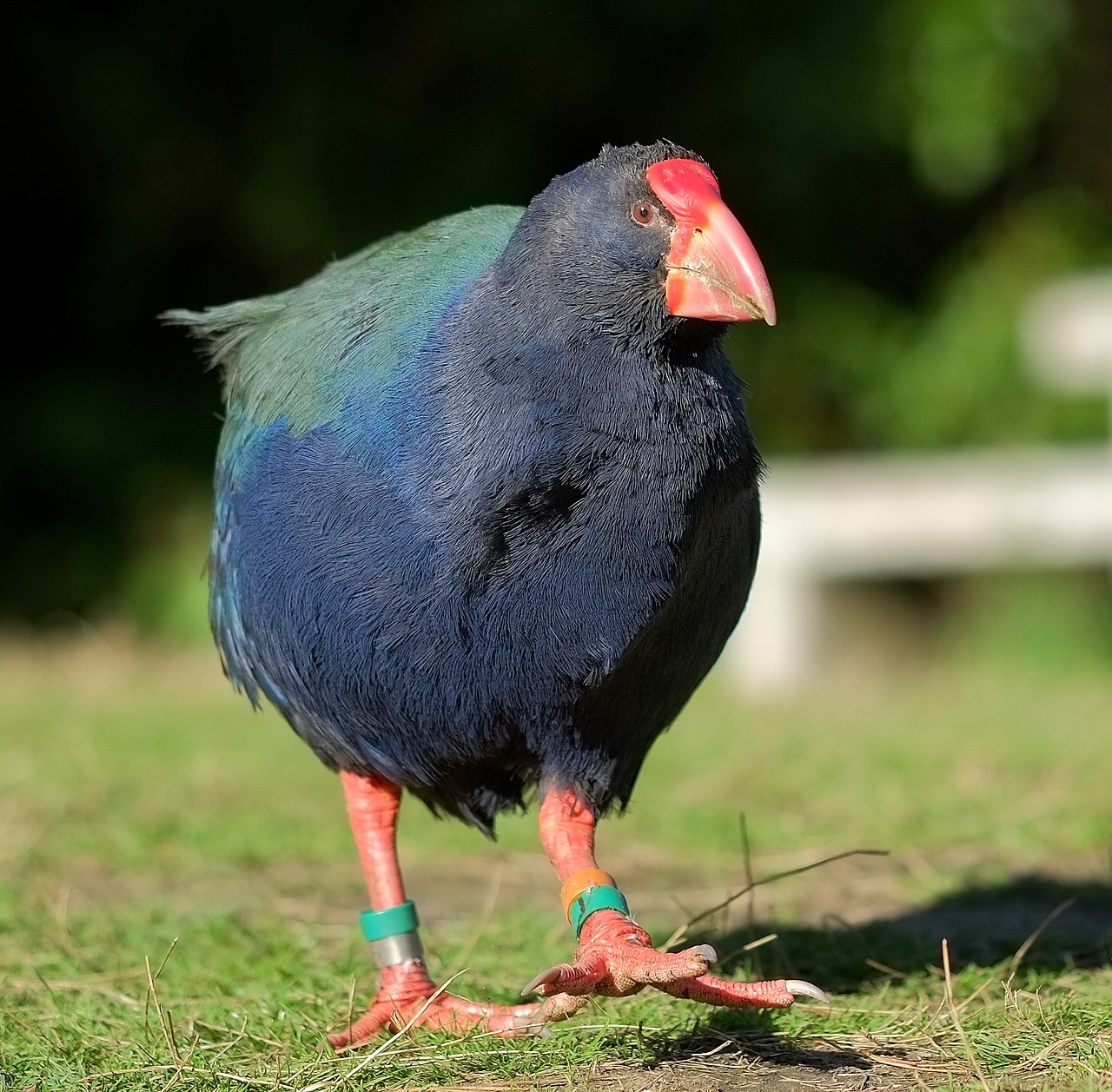
This is a map of Te Wahipounamu. You can see the four national parks outlined within it., Yesterday we entered Westland Tai Poutini National Park where the principal attractions are the glaciers. We did get a glimpse of Franz Joseph Glacier through the mist. Over the next week we will visit all four of these parks. Today will feature our boat trip up the Haast River into Mount Aspiring National Park which is most famous for its alpine lakes . In a few days we’ll enter perhaps New Zealand’s most famous national park Fiordland where we’ll cross from the entry point at Te Anau all the way to the Tasman Sea by way of Doubtful Sound. Our finale will be an aerial reconnaissance of Aoraki/Mount Cook National Park on the penultimate day of the tour. So you can see that Adventures Abroad has a very comprehensive itinerary that takes in all the highlights of Te Wahipounamu.
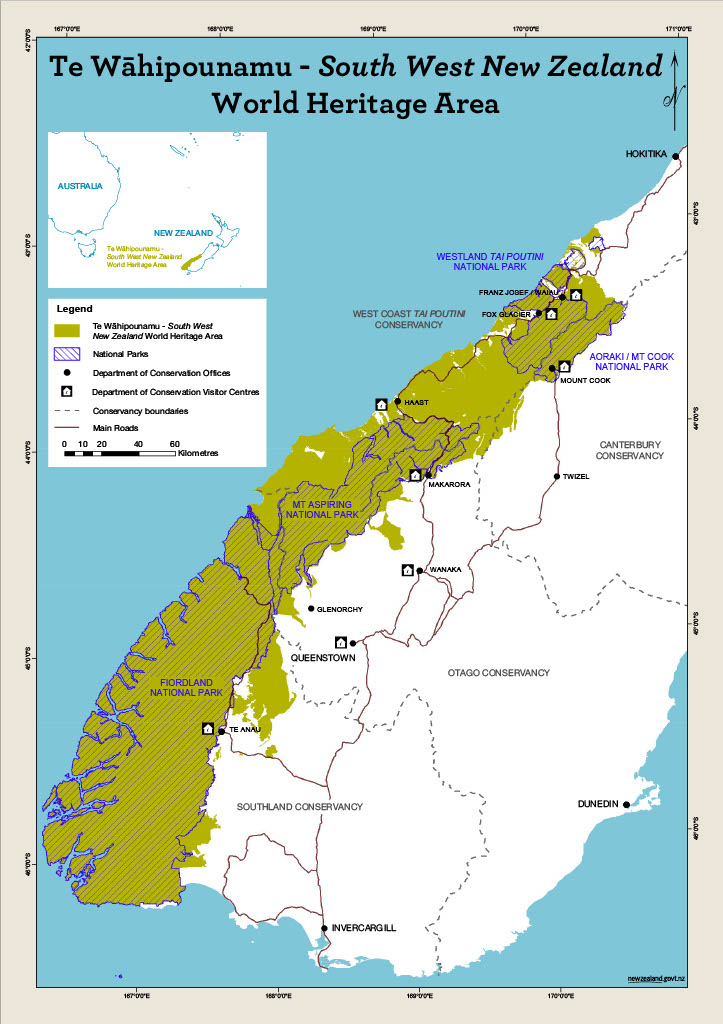
One other thing of note about Te Wahipounamu is that there are virtually no people living in this massive area. The biggest of the three towns is Haast and it has less than 800 residents. So I hope I’ve got you excited with what’s coming up so let’s join Chris and Ian and get started.
The drive from Franz Joseph to the Haast River takes about two hours and features one mountain valley after another with a lot of ups and downs and occasional glimpses of the sea until we get to Knight’s Point which was named after a dog and not a person. Here there is a lookout with this view of the sea. It speaks for itself and gives an idea of how rugged the west coast of the South Island really is. Comparisons to Nova Scotia’s famed Cabot Trail are not off base.
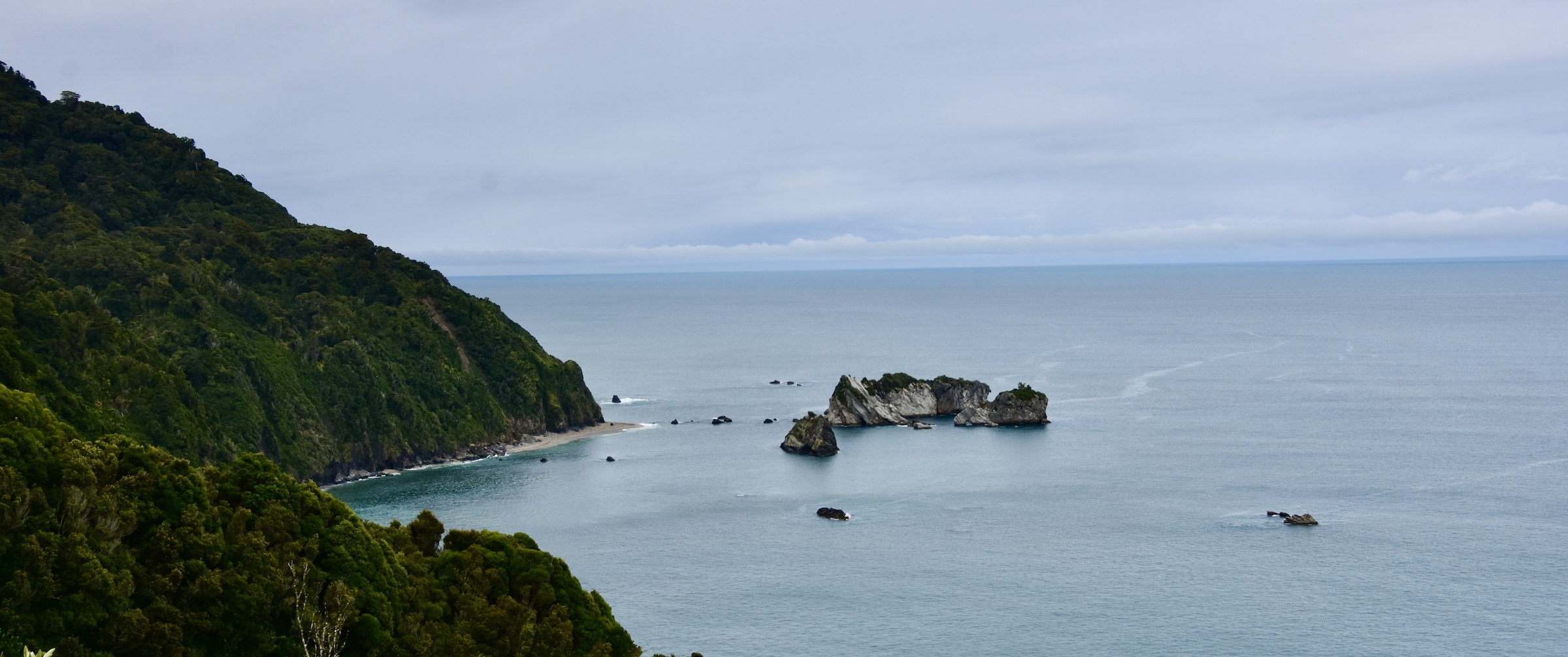
A little while later we descend down to sea level and pull into a side road that ends at the banks of the Haast River. Here we find the world headquarters of Haast River Safari where the husband and wife team of Lindsay and Myreen Kain have been offering jet boats tours for over two decades.
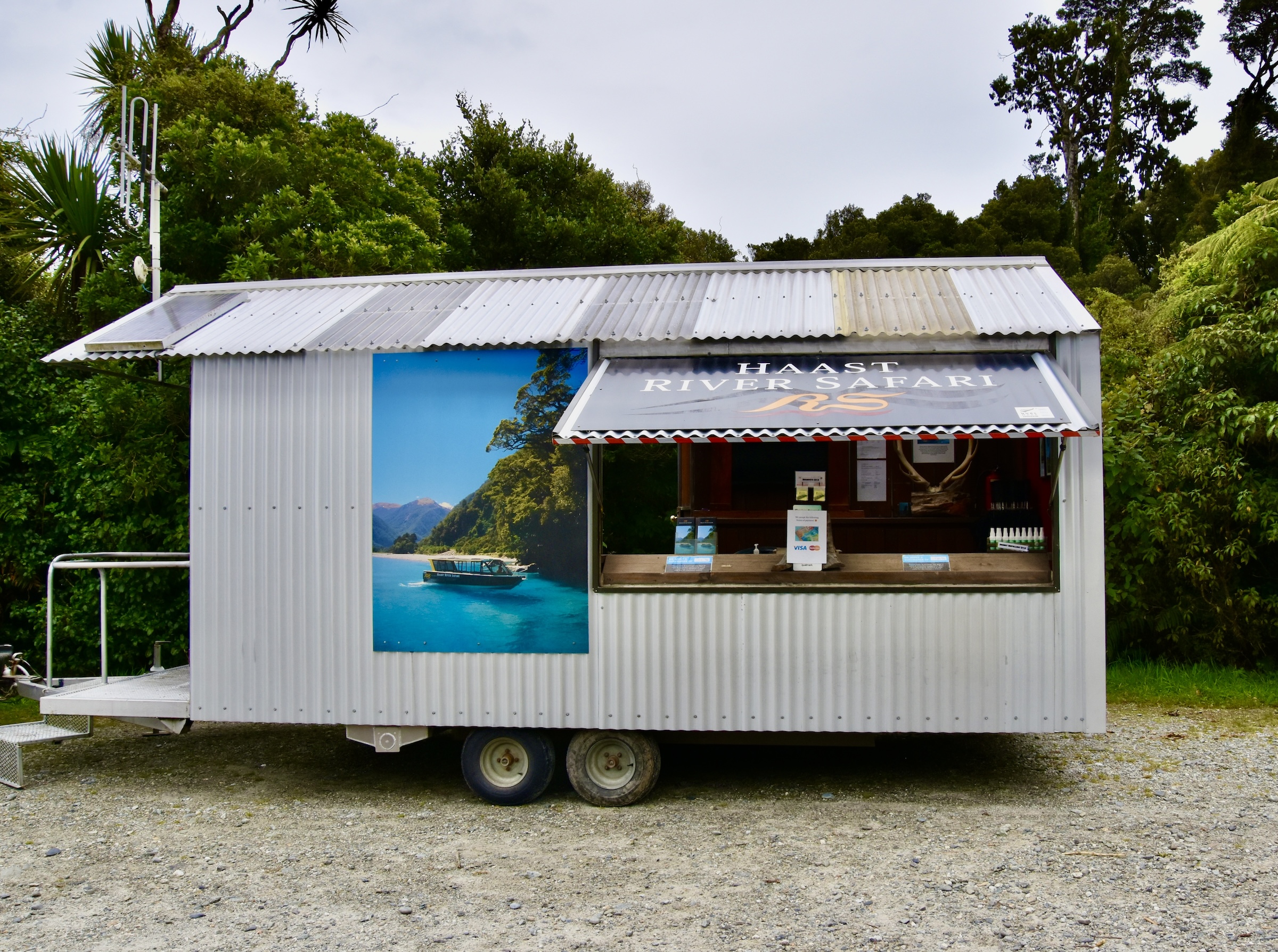
While Chris takes care of the arrangements, Alison throws a stick for Ollie, who like our dog Sid, is completely inexhaustible. The more she threw it the faster he brought it back and even followed us to the boat hoping for more.
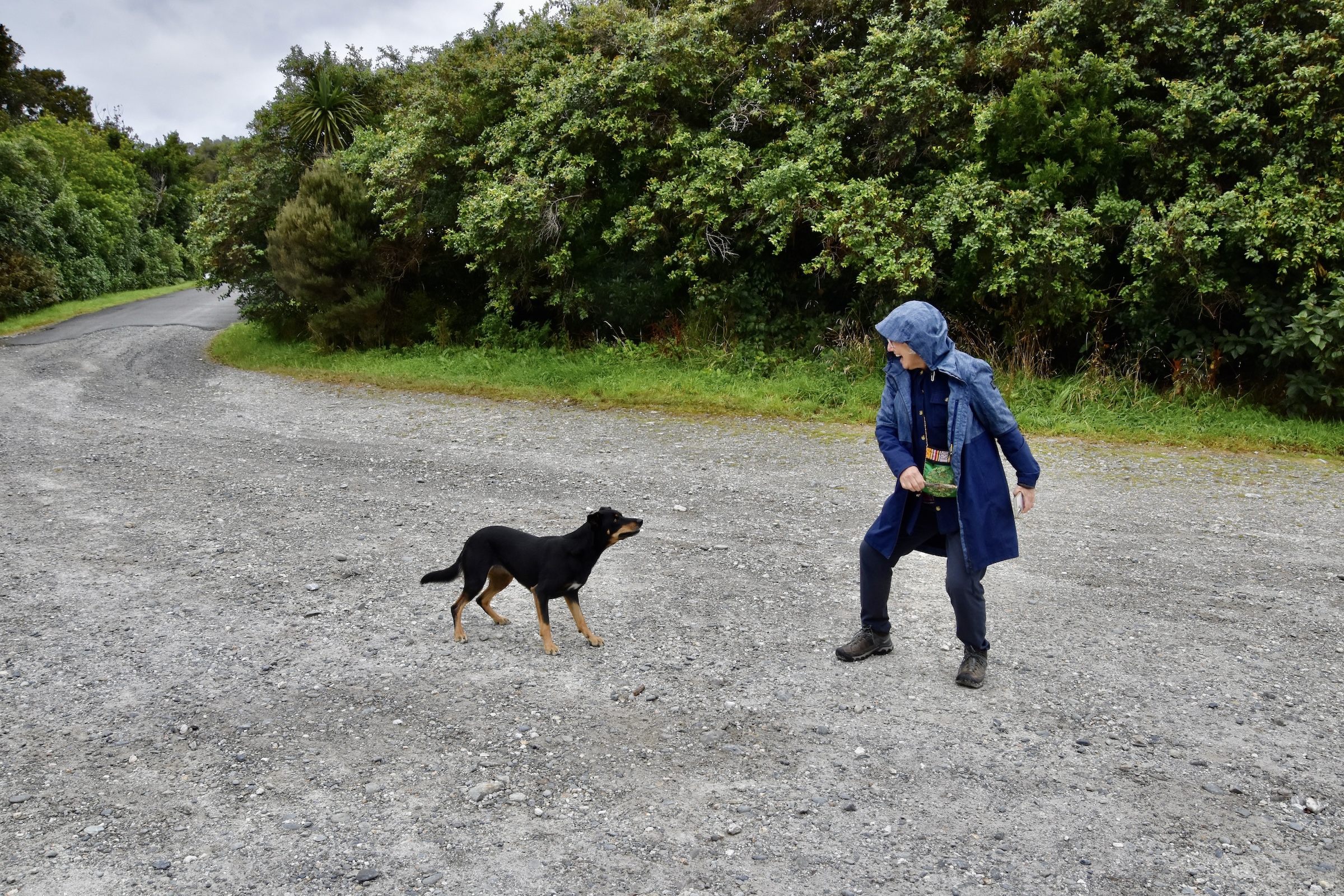
To get to the boat we had to walk under the Haast River bridge which at 737 metres (2,418 feet) is the longest single lane bridge in New Zealand.
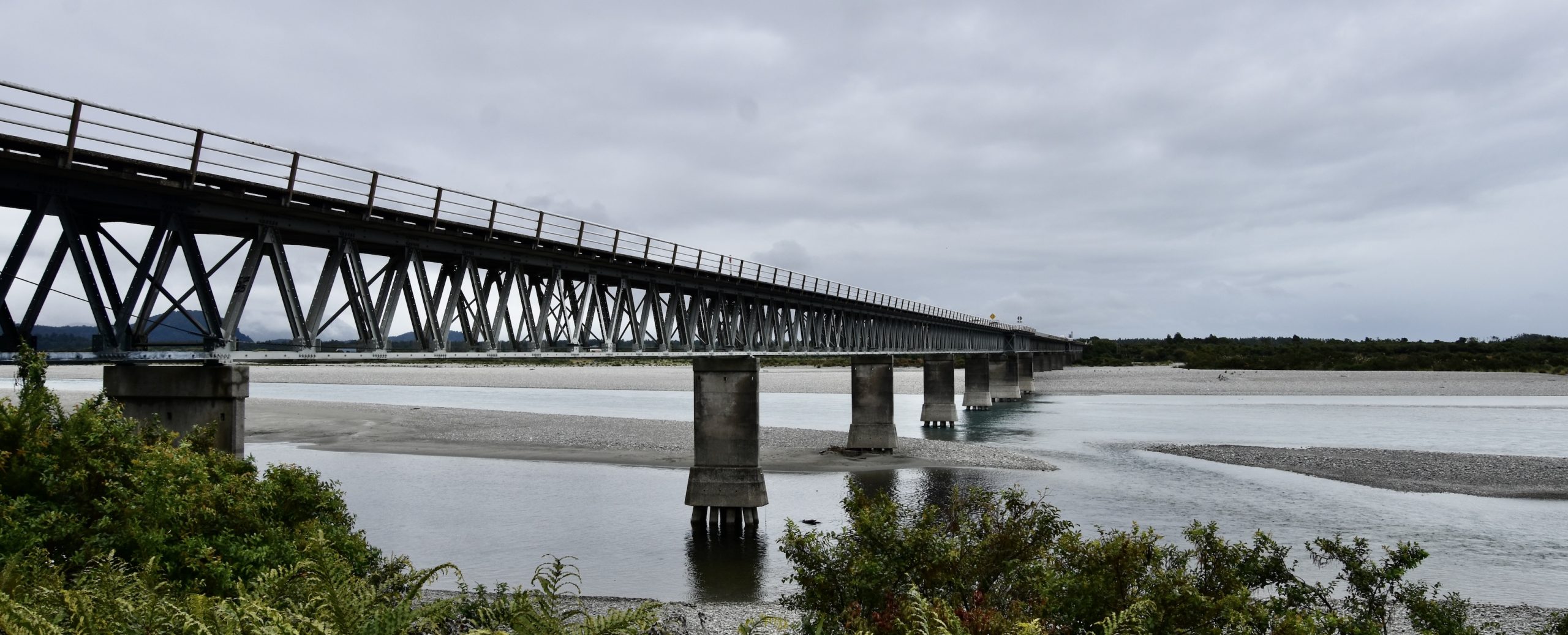
This is the jet boat which has been especially constructed for conditions on the Haast River. Unlike other jet boat tours I have been on where you get totally soaked, this one is fully enclosed, which is a good thing because the Haast River is freezing glacial melt water. Jet boats operate with an impeller that sucks water in through the front of the boat and releases it through a nozzle at the back. This lack of a propeller allows these boats to traverse water as shallow as a few inches which is a necessity on the Haast River which as a braided river, changes course and direction frequently. Also, these jet boats can go very, very fast and turn on a dime as we shall find out.
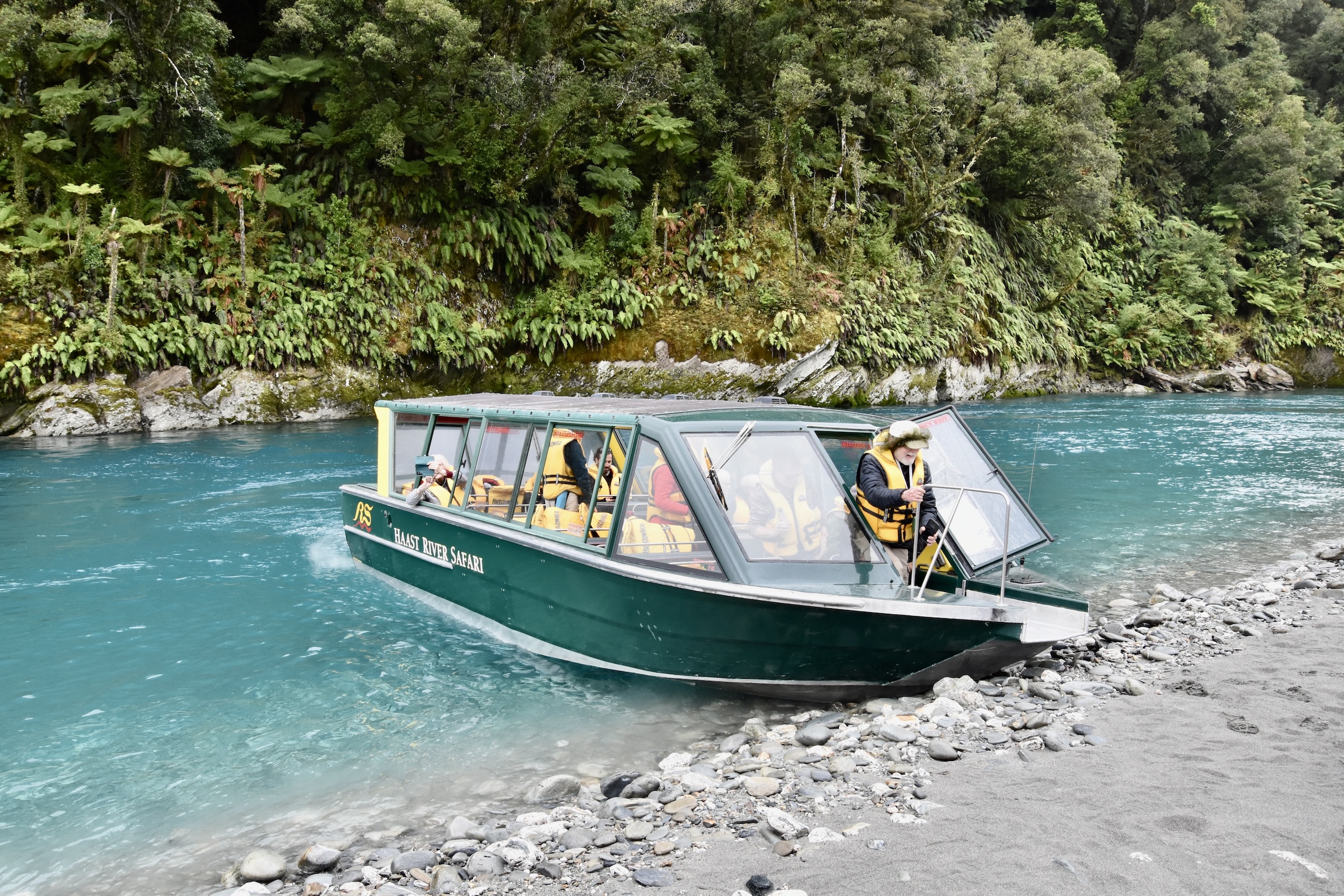
This is skipper Lyndsay, who is a character, with lots of local anecdotes and a few corny jokes.
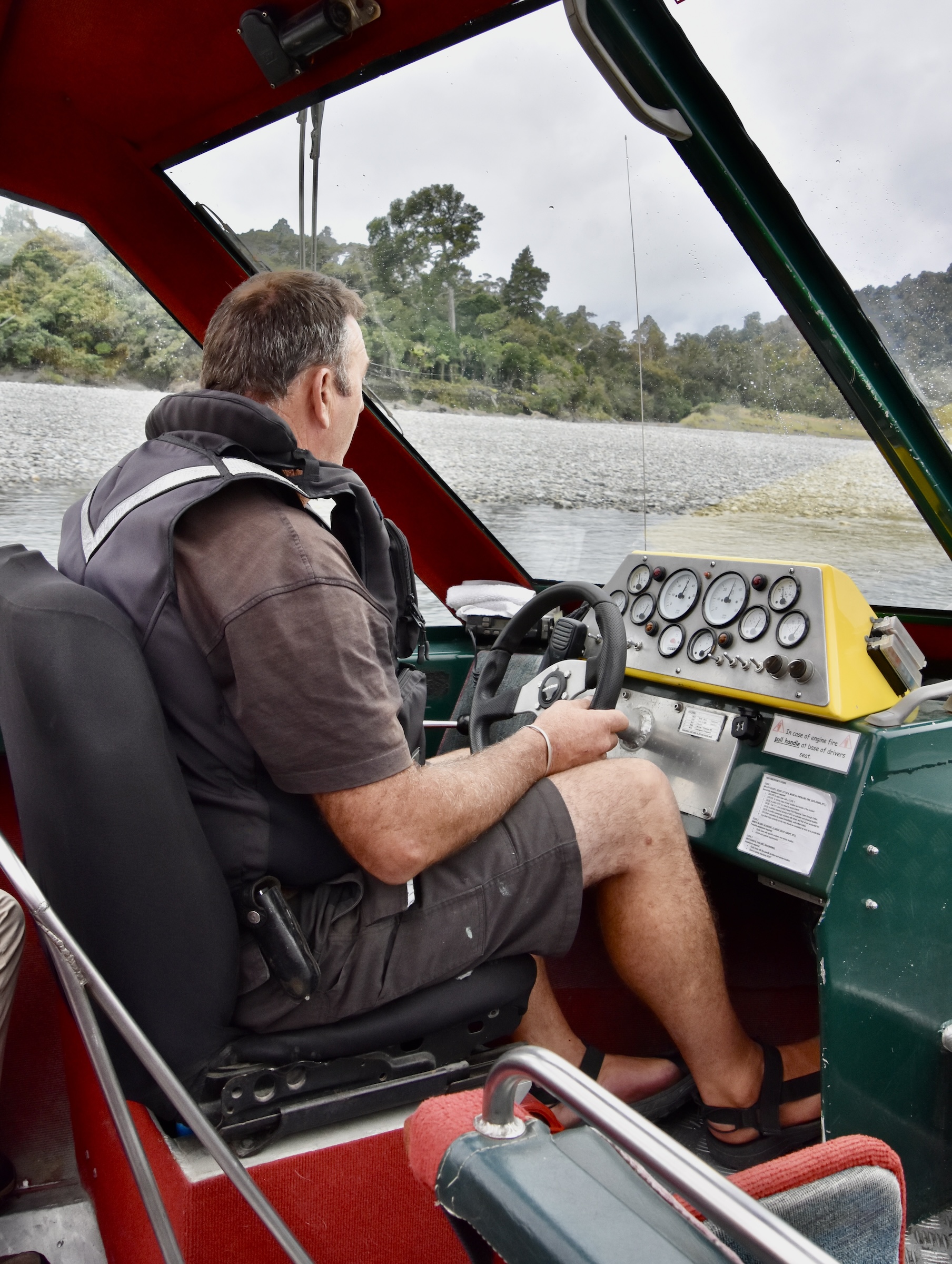
And this is the first mate, Lofty. He stood on the bow of the boat which has no railing no matter how fast it was going, slipping and sliding back and forth and scaring the s*** out of me as I was certain he had to fall in and get run over. I asked Lindsay if he had ever fallen in and he said ‘A few times’. However, without a propeller he survived to act as mate another day.
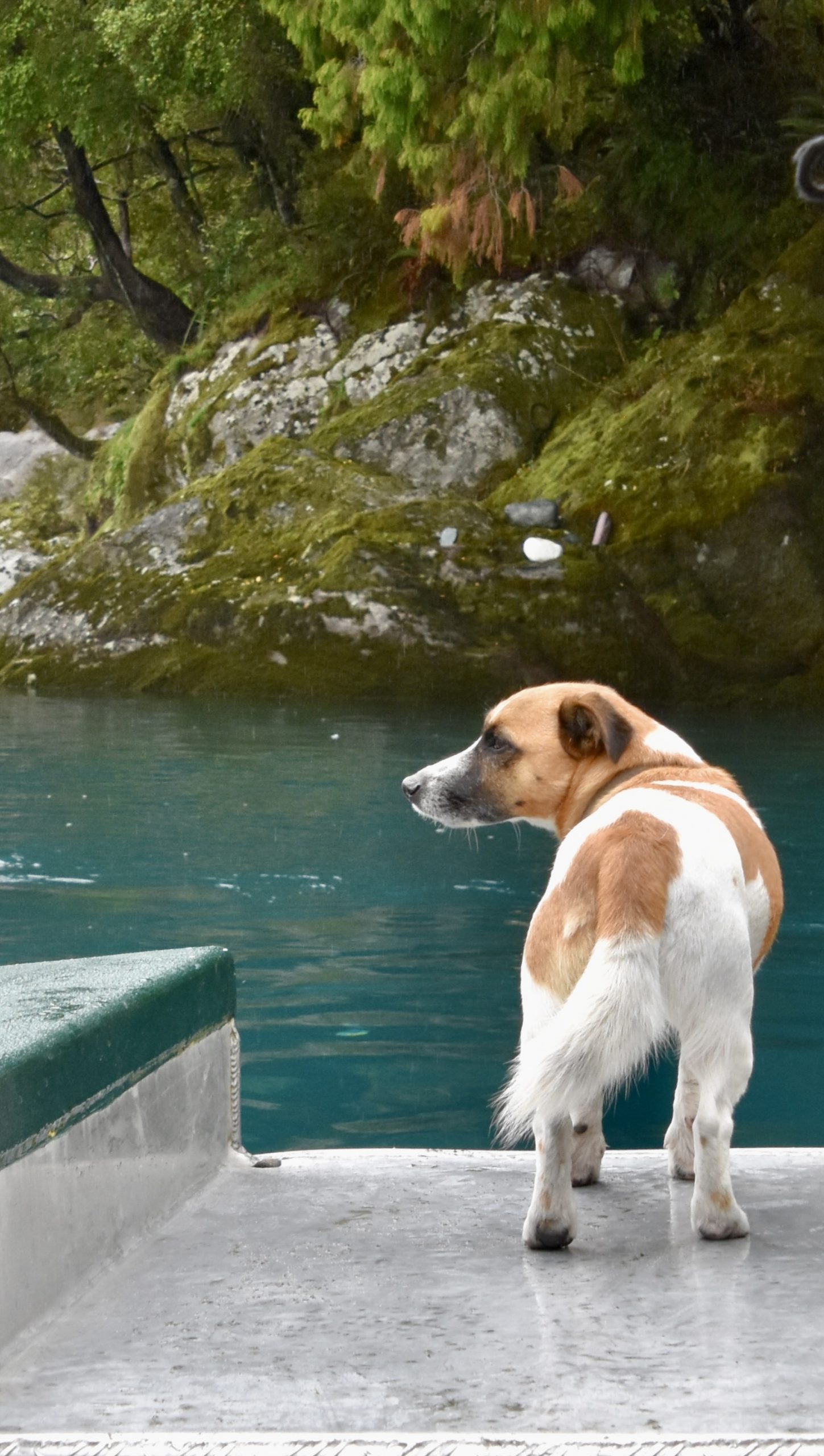
Unfortunately the weather was not as cooperative as we would have hoped and it was a very black and white day.
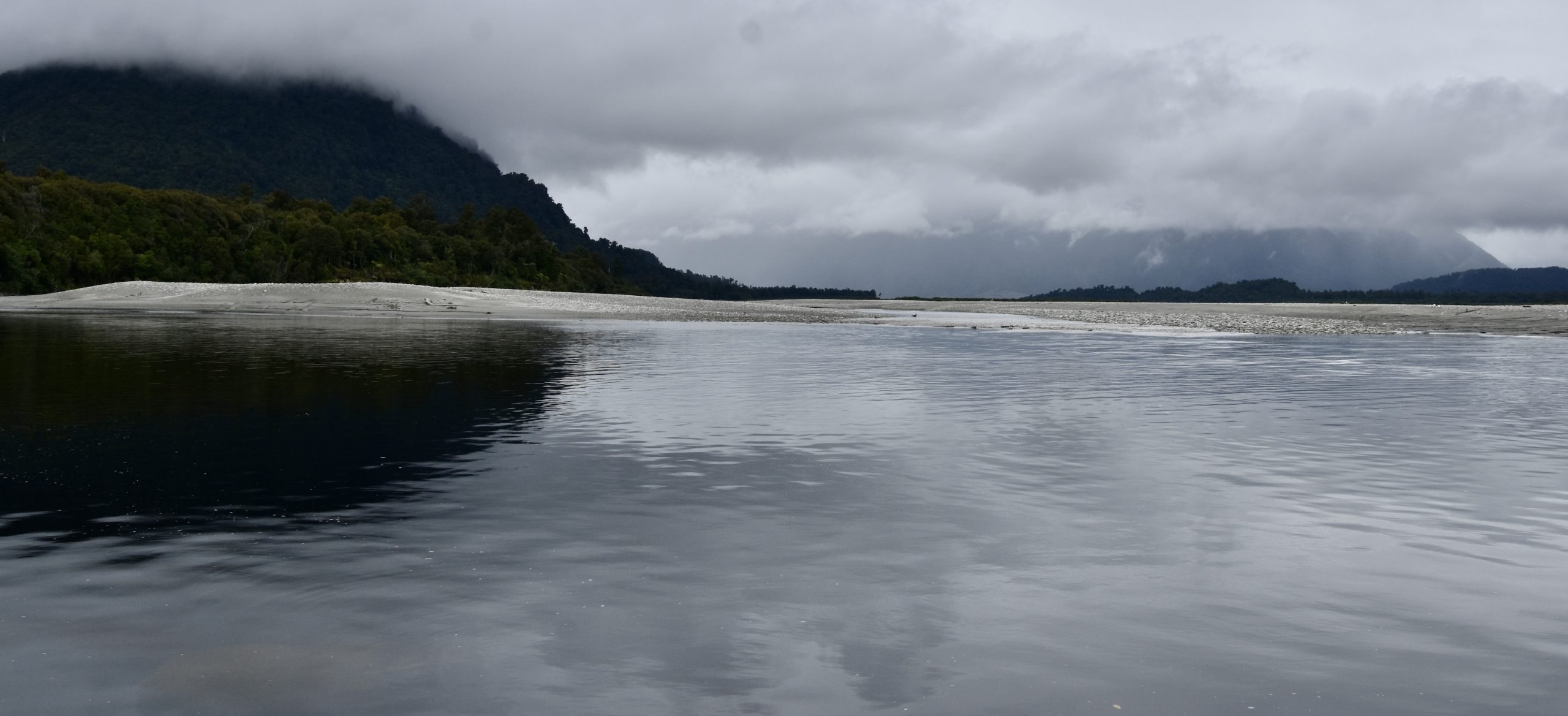
The further upriver we went the narrower the valley became and there were a number of waterfalls including this one which gives and idea of the lush beech forests that are a trademark of Te Wahipounamu.
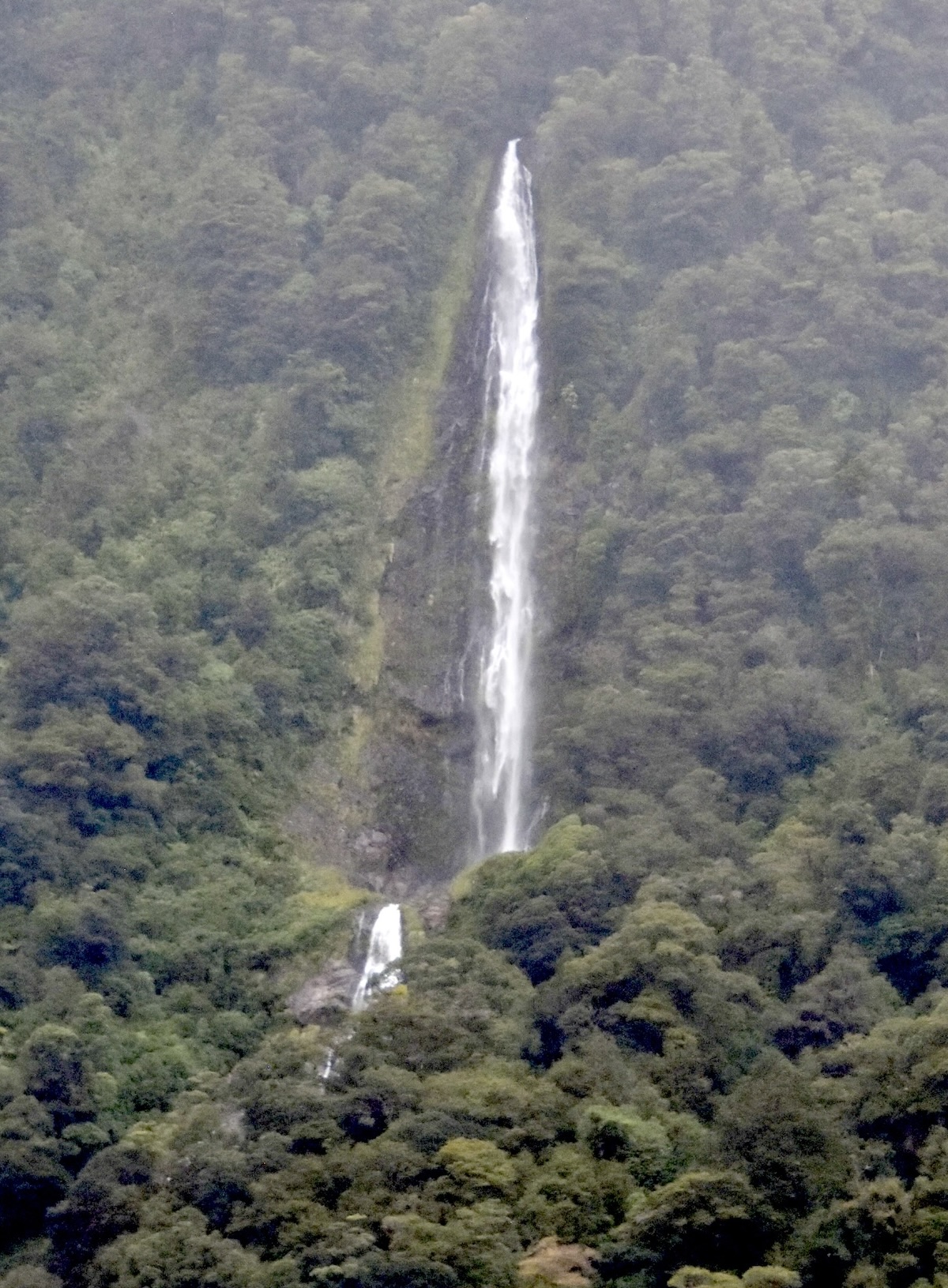
Since I don’t have great photos from this trip I’m going to cheat and add one from the company’s website which gives a much better idea of the colour of the water and the speed of the jet boat.
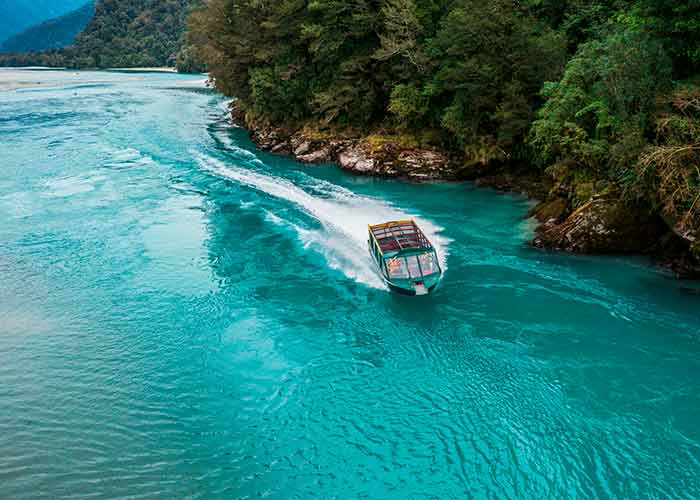
The name Te Wahipounamu means ‘place of the greenstone’, a very important resource for the Maori who used it to make a number of things including the greenstone clubs we have been seeing in every museum we have visited. They were lethal weapons in the hands of a capable rangatira. It also makes wonderful jewelry and ornamental carvings.The greenstone found in many parts of Te Wahipounamu is actually nephrite, one of the two forms of jade and the best specimens can fetch up to $1,000 USD a carat.
Skipper Lindsay tells us that the Haast River is one of the best sources of pounamu in the country and we pull up to a small island in the river to look for some. He shows us what to look for.
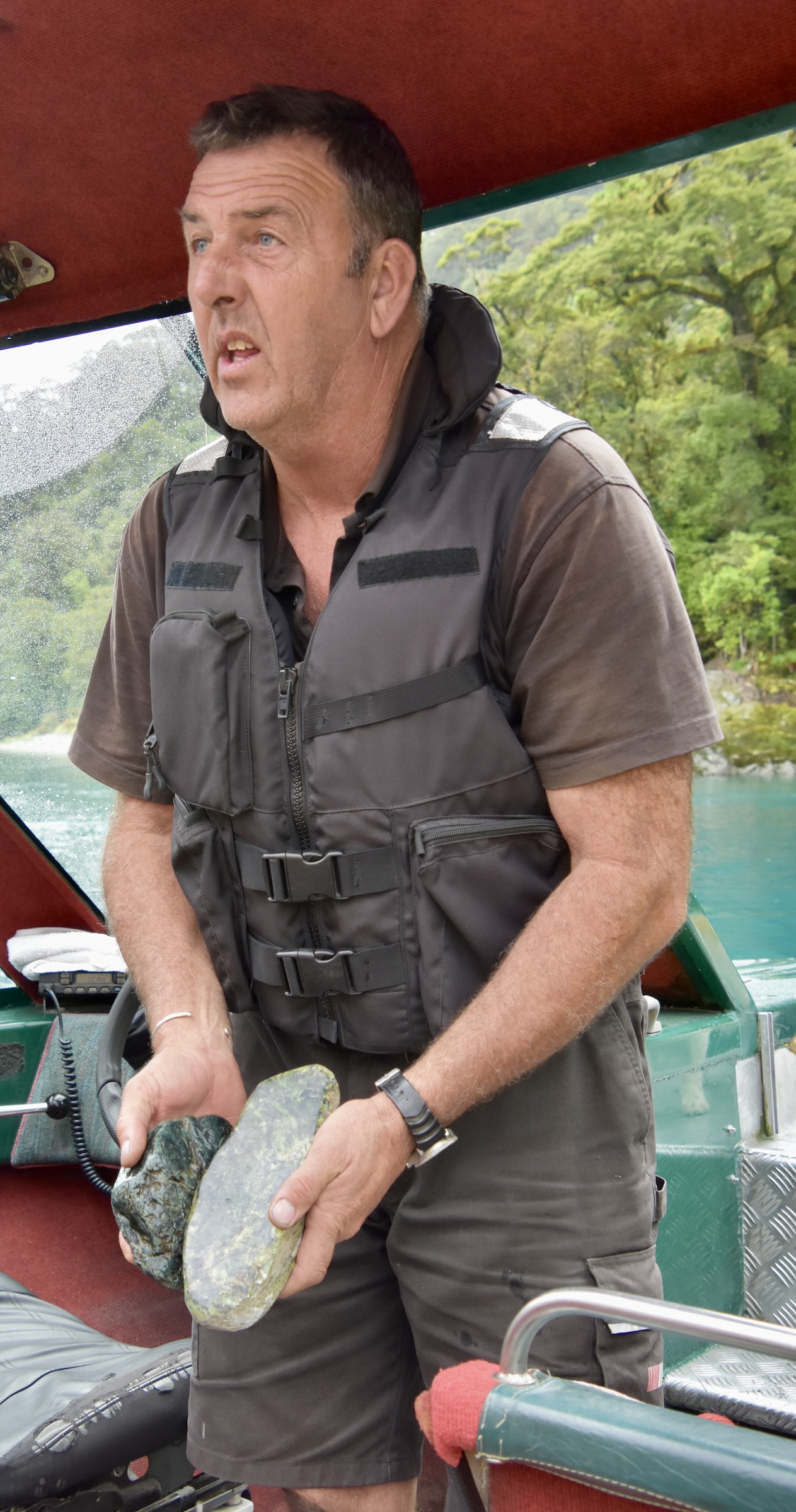
Within minutes Alison and I, and just about everyone else on the tour, thinks they have struck gold, or at least jade.
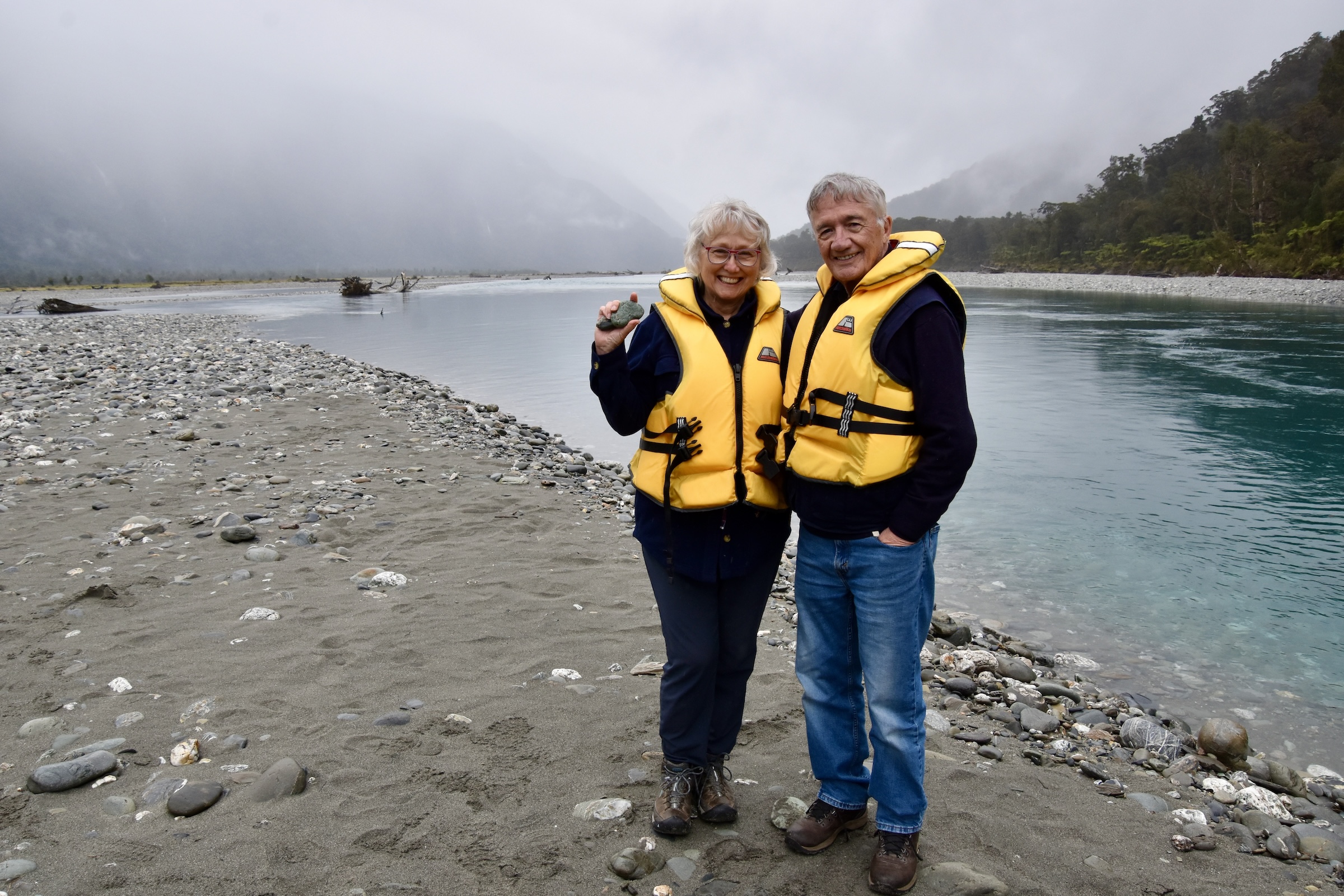
Sadly, Lindsay quickly disabuses us of our notions of grandeur – it’s just a rock.
As we near the end of our journey up the Haast River in Te Wahipounamu, Lindsay asks us if we want him to do a donut or two and the answer is a unanimous ‘Yes’. Now we’ve all seen people on skidoos doing donuts and mostly thought them to be idiots. However, when your inside a jet boat it’s another matter. It’s pretty damn exciting. Here’s an aerial view of just how tight the circle that the boat makes really is. I wasn’t lying when I said these things can turn on a dime and at high speed the boat is almost on its side while making this manoeuvre. After the first donut we asked for two encores.
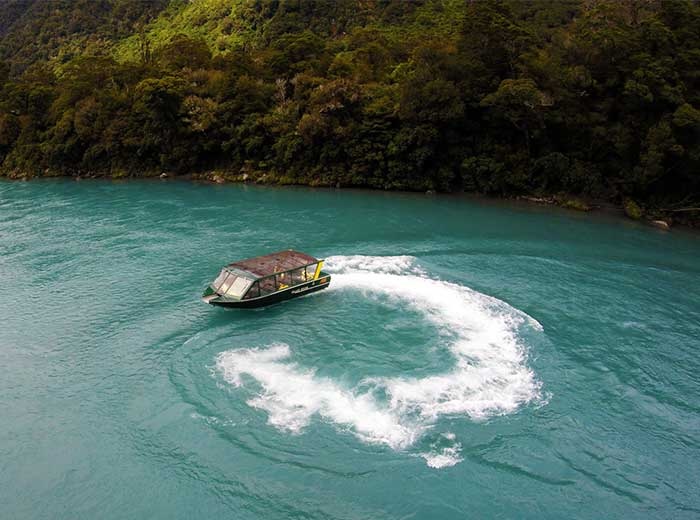
The trip ends at Roaring Billy Falls, where we said goodbye to Lindsay and Lofty and rejoined Ian. We could have just driven here, but how much more interesting to take a jet boat.
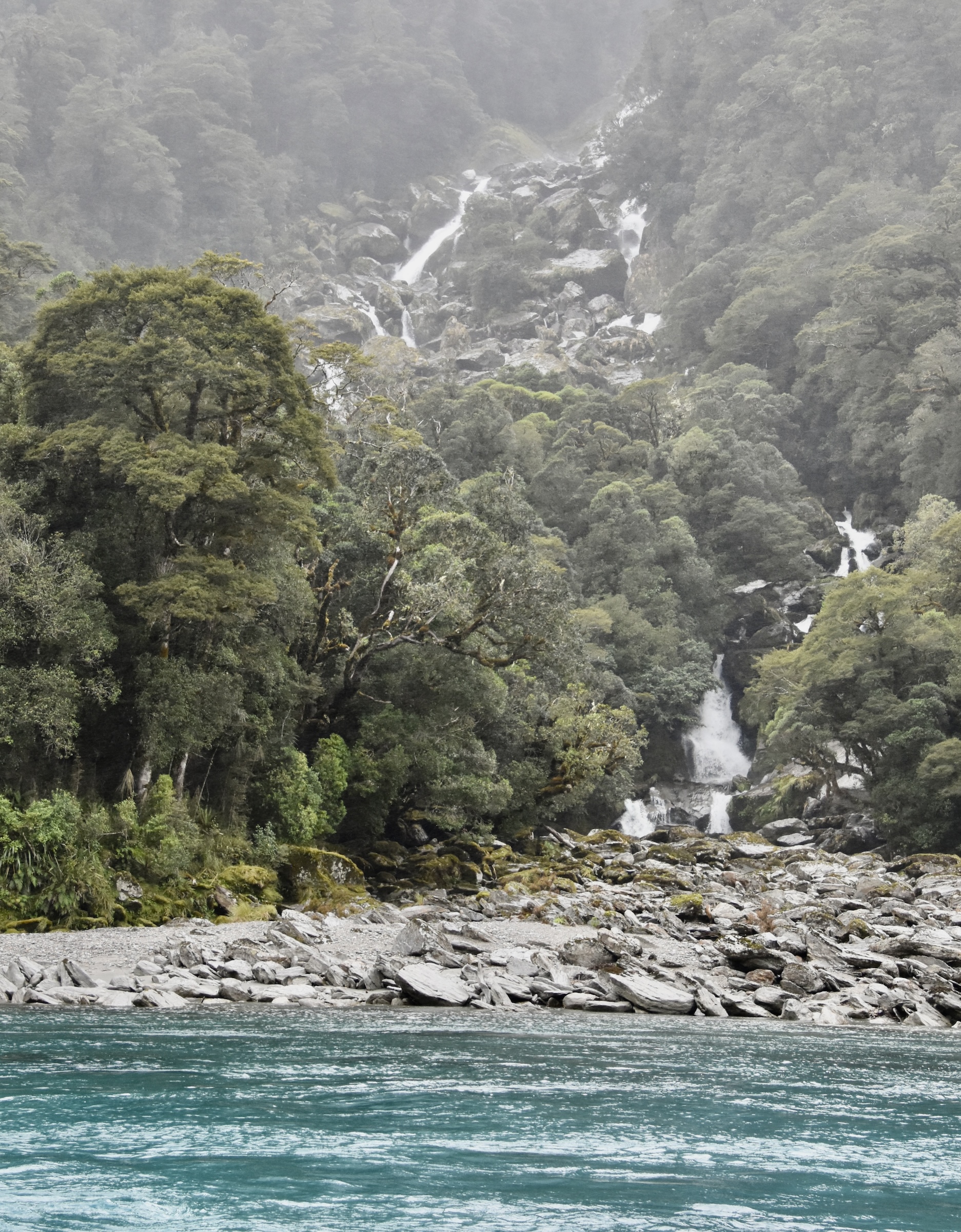
The journey now proceeded to cross over the Southern Alps via Haast Pass passing by a series of narrow gorges known as the Gates of Haast.
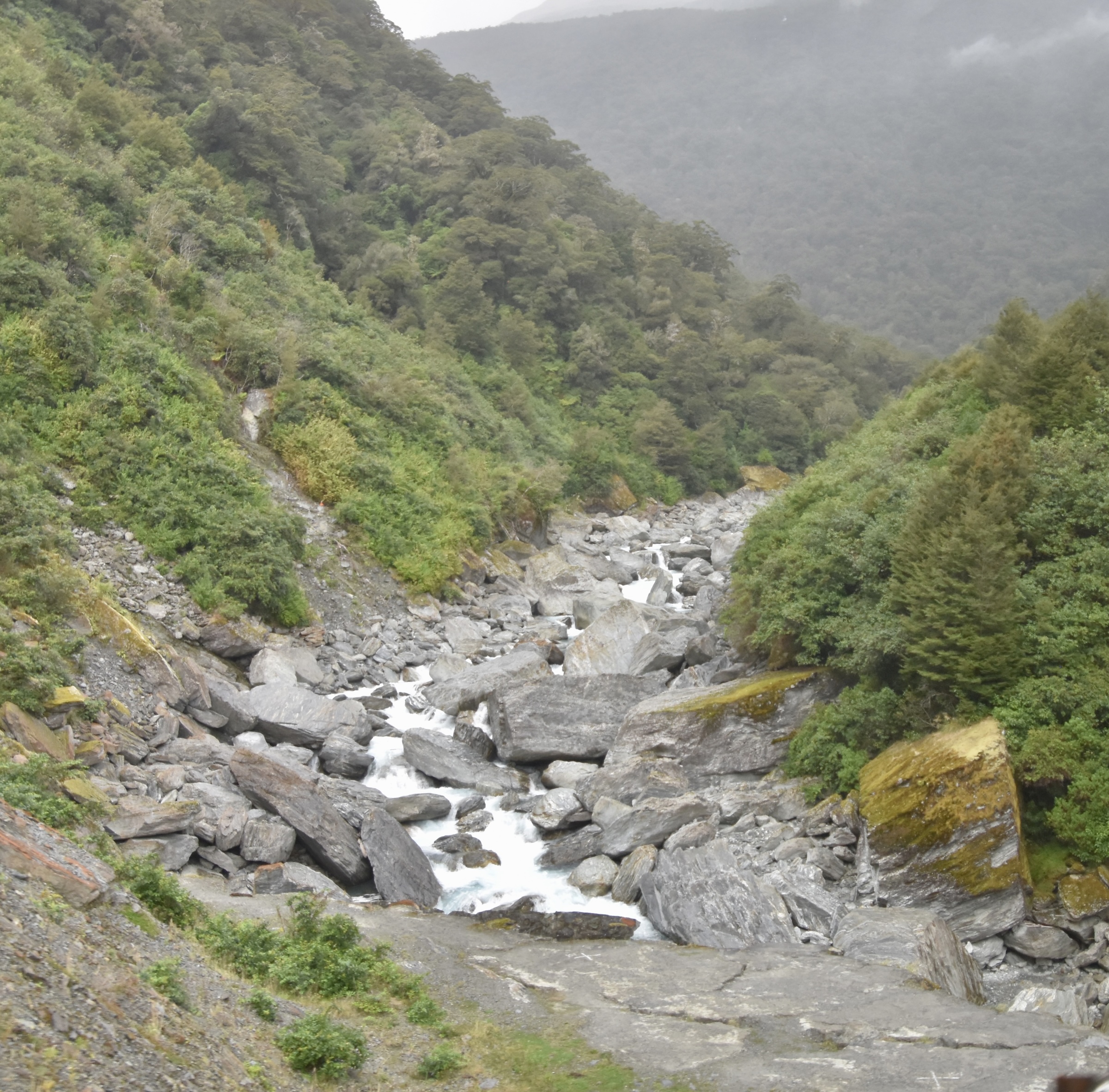
We stopped for lunch at the whistle stop of Makarora where the all purpose Makarora Country Cafe and Camp had one of the best license plate collections I’ve seen anywhere with every state and province in North America covered. Where in God’s name would they get three current Nova Scotia plates in a place as remote as this?
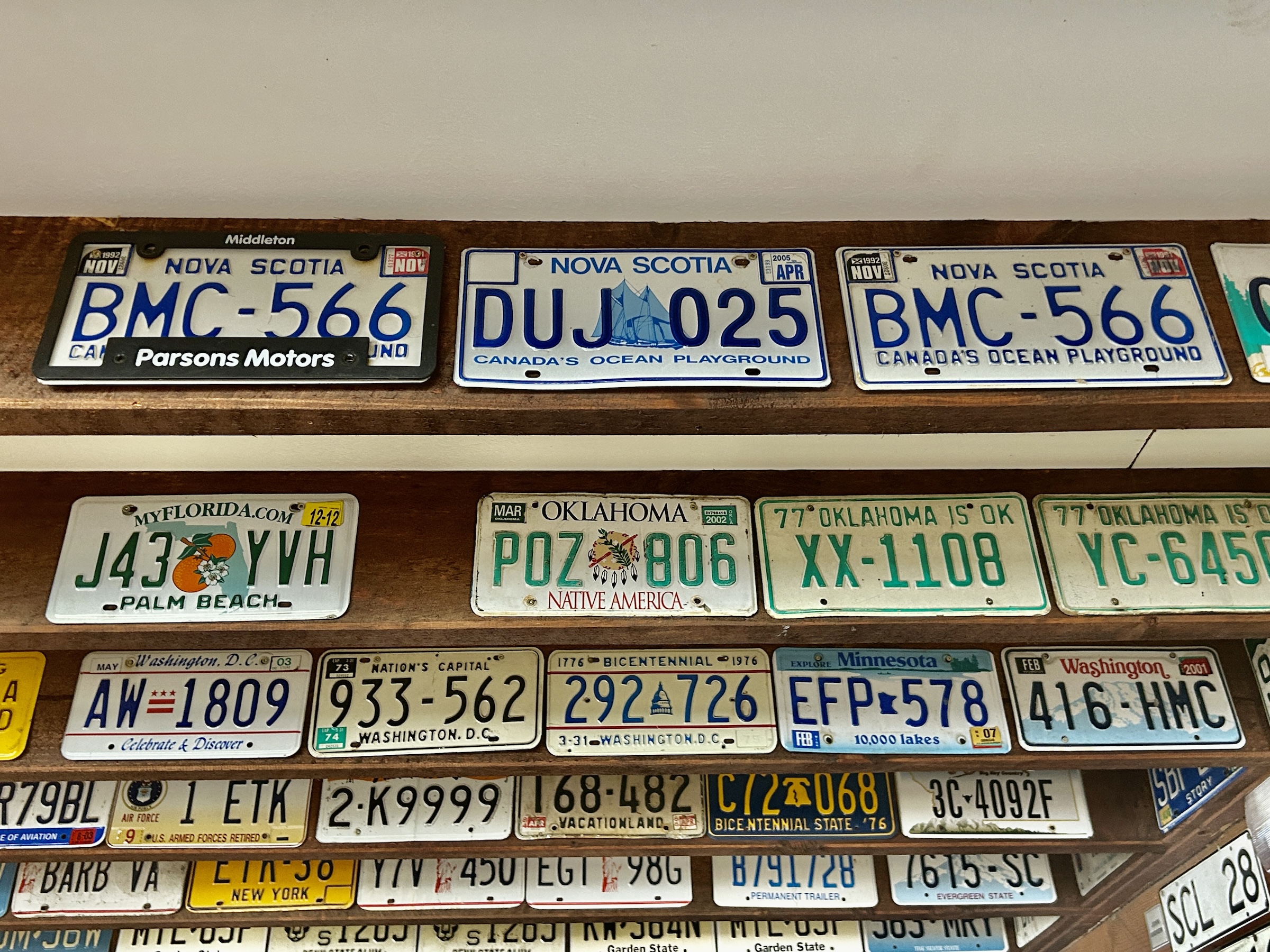
We had now left Te Wahipounamu and were headed toward Queenstown on what has to be one of the most scenic roads I’ve ever had the pleasure of travelling. Lakes Wanaka and Hawea are amongst the most beautiful alpine lakes you’ll find anywhere. Here is a small gallery of photos from this drive from Makarora to Queenstown. Double click to open and double click again to enlarge.
- Light over Lake Wanaka
- Windy Day on Lake Wanaka
- Lake Hawea
- Photographing Lake Hawea
- Descent into Queenstown
- Queenstown Landing Strip
The last photo shows what Ian, who believe it or not has his own Mig jet, says is one of the most difficult landing strips in the world. Pilots must come down quickly to the short landing strip and deal with frequent windy conditions such as you see in the second photo in the gallery.
The descent by motor vehicle is almost as hairy. This video gives an inkling of how thrilling the ride down to Queenstown is from the Crown Range Road. Most people arrive by the much more sedate NZ 6, but Ian was having none of that.
Well, we’ve safely arrived in New Zealand’s outdoor adventure capital, Queenstown and we all have a free day ahead.
There are opportunities to take the gondola up to Bob’s Peak, explore the city on foot, take a boat ride on Lake Wakatipu and more. For our part Alison and I will be golfing the Coronet Courser at Millbrook Resort. I’ll give a full report on the course in the next post.


